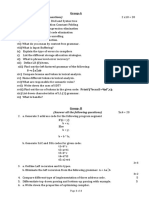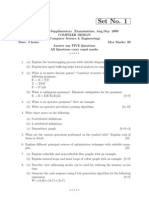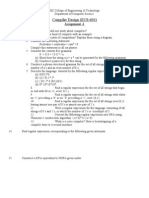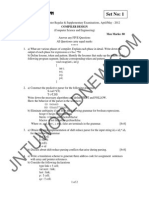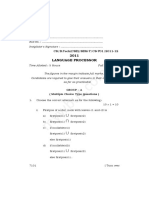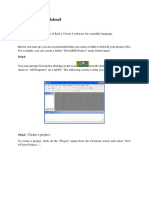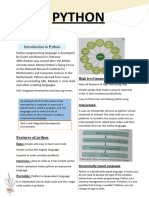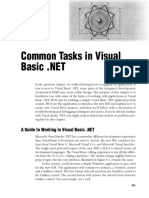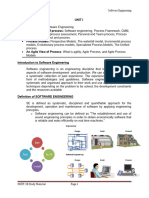0% found this document useful (0 votes)
22 views4 pagesMca 501a Distributed Database Management 2012
The document is an examination paper for Compiler Design, including multiple choice, short answer, and long answer questions. It covers topics such as grammar, parsing, three-address code, and optimization techniques. The exam is structured into three groups with varying question formats and marks allocation.
Uploaded by
rajgobindadhamCopyright
© © All Rights Reserved
We take content rights seriously. If you suspect this is your content, claim it here.
Available Formats
Download as PDF, TXT or read online on Scribd
0% found this document useful (0 votes)
22 views4 pagesMca 501a Distributed Database Management 2012
The document is an examination paper for Compiler Design, including multiple choice, short answer, and long answer questions. It covers topics such as grammar, parsing, three-address code, and optimization techniques. The exam is structured into three groups with varying question formats and marks allocation.
Uploaded by
rajgobindadhamCopyright
© © All Rights Reserved
We take content rights seriously. If you suspect this is your content, claim it here.
Available Formats
Download as PDF, TXT or read online on Scribd
/ 4
